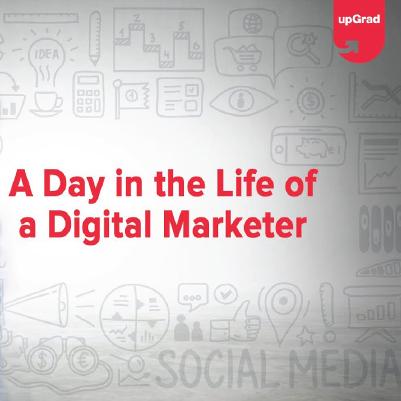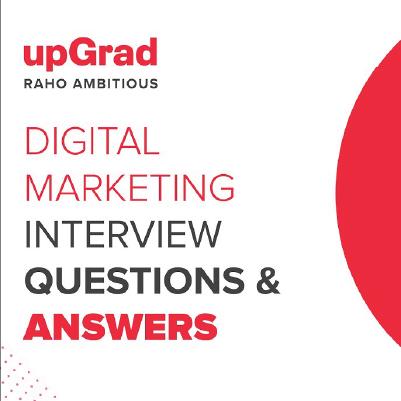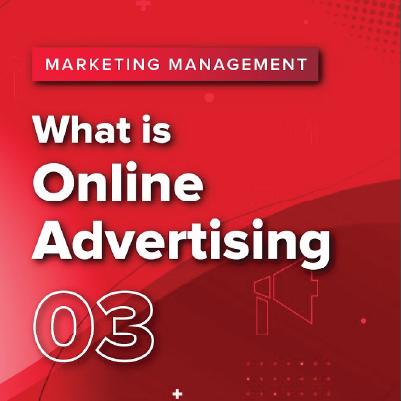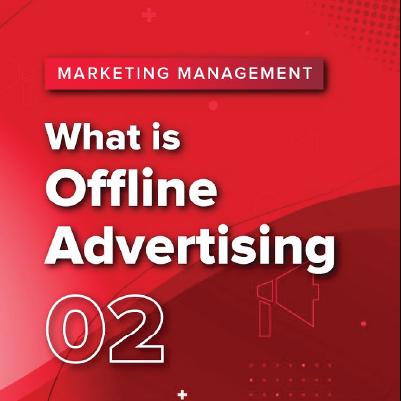Working professionals
Domains
Doctorate
Artificial Intelligence
Data Science
Gen AI & Agentic AI
MBA
Marketing
Management
Education
Project Management Certification
Doctorate
For All Domains
IIITB & IIM, Udaipur
Chief Technology Officer & AI Leadership ProgrammeSwiss School of Business and Management
Global Doctor of Business Administration from SSBMEdgewood University
Doctorate in Business Administration by Edgewood UniversityGolden Gate University
Doctor of Business Administration From Golden Gate UniversityRushford Business School
Doctor of Business Administration from Rushford Business School, SwitzerlandGolden Gate University
MBA to DBA PathwayLeadership / AI
Golden Gate University
DBA in Emerging Technologies with Concentration in Generative AIGolden Gate University
DBA in Digital Leadership from Golden Gate University, San FranciscoArtificial Intelligence
Degree / Exec. PG
IIIT Bangalore
Executive Diploma in Machine Learning and AIOPJ Global University
Master’s Degree in Artificial Intelligence and Data ScienceLiverpool John Moores University
Master of Science in Machine Learning & AIGolden Gate University
DBA in Emerging Technologies with Concentration in Generative AIExecutive Certificate
IIITB & IIM, Udaipur
Chief Technology Officer & AI Leadership ProgrammeIIIT Bangalore
Executive Programme in Generative AI for LeadersupGrad | Microsoft
Gen AI Foundations Certificate Program from MicrosoftupGrad | Microsoft
Gen AI Mastery Certificate for Data AnalysisupGrad | Microsoft
Gen AI Mastery Certificate for Software DevelopmentupGrad | Microsoft
Gen AI Mastery Certificate for Managerial ExcellenceOffline Bootcamps
upGrad
Data Science and AI-MLData Science
Degree / Exec. PG
O.P Jindal Global University
Master’s Degree in Artificial Intelligence and Data ScienceIIIT Bangalore
Executive Diploma in Data Science & AILiverpool John Moores University
Master of Science in Data ScienceExecutive Certificate
upGrad | Microsoft
Gen AI Foundations Certificate Program from MicrosoftupGrad | Microsoft
Gen AI Mastery Certificate for Data AnalysisupGrad | Microsoft
Gen AI Mastery Certificate for Software DevelopmentupGrad | Microsoft
Gen AI Mastery Certificate for Managerial ExcellenceupGrad | Microsoft
Gen AI Mastery Certificate for Content CreationOffline Bootcamps
upGrad
Data Science and AI-MLGen AI & Agentic AI
Gen AI & Agentic AI
Masters

Paris School of Business
Master of Science in Business Management and TechnologyO.P.Jindal Global University
MBA (with Career Acceleration Program by upGrad)Edgewood University
MBA from Edgewood UniversityO.P.Jindal Global University
MBA from O.P.Jindal Global UniversityGolden Gate University
MBA to DBA PathwayExecutive Certificate
IMT, Ghaziabad
Advanced General Management ProgramMarketing
Executive Certificate
upGrad | Microsoft
Gen AI Foundations Certificate Program from MicrosoftupGrad | Microsoft
Gen AI Mastery Certificate for Content CreationOffline Bootcamps
upGrad
Digital MarketingManagement
Degree
O.P Jindal Global University
MSc in International Accounting & Finance (ACCA integrated)
Paris School of Business
Master of Science in Business Management and TechnologyGolden Gate University
Master of Arts in Industrial-Organizational PsychologyExecutive Certificate
Education
Education
Northeastern University
Master of Education (M.Ed.) from Northeastern UniversityEdgewood University
Doctor of Education (Ed.D.)Edgewood University
Master of Education (M.Ed.) from Edgewood UniversityProject Management Certification
Accreditation Certifications
Knowlegehut
Change ManagementKnowlegehut
Project Management TechniquesKnowlegehut
Oracle Primavera P6 V18.8Fresh graduates
Domains
Data Science
Management
Marketing
Data Science
Bootcamp
Offline Bootcamps
upGrad
Data Science and AI-MLManagement
Marketing
Bootcamp
upGrad Campus
Advanced Certificate in Performance MarketingOffline Bootcamps
upGrad
Digital Marketing- Study abroad
- Offline centres
More
RESOURCES
BlogsCutting-edge insights on education
WebinarsLive sessions with industry experts
TutorialsMaster skills with expert guidance
Learning GuideResources for learning and growth
COMPANY
Careers at upGradYour path to educational impact
Hire from upGradTop talent, ready to excel
upGrad for BusinessSkill. Shape. Scale.
Experience centerImmersive learning hubs
About usOur vision for education
OTHERS
Refer and earnShare knowledge, get rewarded
Search Engine Marketing Online
Search engine marketing (SEM) is a digital marketing practice of using paid advertisements to promote a business online. The advertisements appear on search engine pages.
-5d0f5b994a674e7eae7d8c6a60bb6cb1.jpeg&w=3840&q=75)
Search Engine Marketing Course Overview
The online marketplace has never been more competitive. With the rapidly increasing number of digital buyers and an unprecedented boost in global retail e-commerce sales, it is more important than ever to make your business visible online.
So, how can businesses make their marketing more effective amidst the competition? Is there a way to get value from digital advertising investments while having a competitive advantage?
The answer is: search engine marketing.
Search engine marketing (abbreviated to SEM) is a digital marketing strategy aimed at increasing the visibility of websites on search engine results pages (SERPs). When done right, SEM is an effective way to grow and establish your online business presence, which is a powerful alternative to organic strategies.
Search engine marketing (SEM) is a digital marketing practice of using paid advertisements to promote a business online. The advertisements appear on search engine results pages (SERPs).
Unlike search engine optimisation (SEO), which focuses on organic search activities, SEM refers to paid search advertising. In simpler terms, advertisers pay money for their ads to appear alongside organic search results of search engines such as Google and Bing.
Also known as paid search or pay-per-click (PPC), these ads appear in various formats, from text-based advertisements to visual product listings.
For instance, what happens when you search “running shoes” on Google? While websites with a solid SEO strategy typically rank first organically, you will also find search results with a tiny “Ad” written next to them. These are paid searches.
With search engines like Google being the primary source for online searches, your products or services must rank first in SERPs when a user is searching for them.
With countless businesses like yours vying for attention and recognition from the same target audience, the last thing you want is to get invisible among the millions of searches on SERPs. While organic marketing efforts through SEO are great, they may not be enough to give your business the limelight it needs to stand out from competitors.![]()
Search engine marketing is one of the fastest and most effective ways to directly reach your target audience by displaying paid ads among search engine results. It takes advantage of the psychology of online shoppers, who are more likely to make a purchase the moment they see relevant ads with at-a-glance information like price and product details. As soon as consumers search for a product like yours, they directly see your ad at a prominent location on SERPs without having to scroll further down.
Let’s look at the objectives search engine marketing seeks to fulfill:
1. Generating and reinforcing brand recognition
2. Reaching consumers at the right place and time
3. Tapping the target audience
4. Offering a competitive advantage
5. Scaling with business growth
1. Generating brand awareness and recognition
Since SEM puts ads at the top of search engine results pages, it’s easier for consumers to become aware of your brand. With more awareness comes greater recognition and, eventually, a boost in sales. Repeatedly and consistently presenting your brand increases the chances of a prospect becoming a paying customer. Recognition increases familiarity, and people are more likely to engage with brands they are familiar with than brands with a meek online presence.
2. Reaching consumers at the right place and time
A significant chunk of global online search experiences starts with a search engine like Google. Thus, making yourself prominent on search engine results pages is an effective way to reach prospects precisely when searching for something you offer. However, every click on your paid ads may not turn into a sale. Yet, it serves as a crucial touchpoint and takes the prospect further down the sales funnel towards becoming a loyal customer.
3. Tapping the target audience
Unlike traditional marketing strategies, search engine advertising brings you several steps closer to your target audience. Traditional advertising avenues are expensive, and even after spending a fortune on advertising campaigns, you may never be able to focus on your target customers. On the contrary, the users have selected CTR as the bidding strategy but it can be costly if the users are paying for views/ impressions. Moreover, SEM is a sure-shot way to feature on top of SERPs and be noticeable to your audience.
4. Offering a competitive advantage
When done right, search engine marketing can reinforce your SEO strategies. If you already have exceptional SEO strategies with a coveted spot on SERPs, SEM allows you to appear above organic search results with paid ads. With a solid and compelling SEM strategy, you can easily stay ahead of your competitors and establish your market presence.
5. Scaling with business growth
Since SEM is scalable, you can gradually increase your search engine marketing efforts as your business grows. In addition, SEM is flexible, letting you refine your paid advertising campaigns depending on your marketing goals and objectives. You can keep your budget limited and see what works best for your business. Once you identify the best strategies, you can scale your efforts to match your marketing expectations.
Although modern interpretations define SEM as paid online advertising, search engine marketing is of the following three types:
1. Pay-per-click (PPC)
2. Organic SEO
3. Local SEO
Let’s explore each type of search engine marketing.
1. Pay-per-click (PPC)
In the pay-per-click or PPC model, the advertiser must pay a fee every time a user clicks on their online advertisement on SERPs. Also known as Sponsored Search or Sponsored Ads, PPC search results are easily visible to online searchers due to their prominent position at the top of SERPs. Google labels paid search results as “Ad” or “Sponsored.”
2. Organic SEO
Unlike the PPC model of online advertising, organic SEO aims to increase online visibility and drive traffic through organic search results. A search engine optimisation method helps businesses gain organic traffic and increased visibility through unpaid and non-local results. Hence, advertisers need not pay a fee for every click-through to their site.
3. Local SEO
Local SEO aims to get your business to appear in Google Map results. Like organic SEO, there is no charge involved in implementing a local SEO strategy. Unlike organic SEO with a global reach, local SEO focuses on increasing the business’ visibility within a specific geographical area. Thus, it mainly caters to the local audience and helps them discover companies online.
A powerful and effective SEM campaign strategically optimises paid search ads with specific marketing goals in mind.
However, creating a search engine marketing strategy that works and gives the desired ROI is not a cakewalk. It requires a thorough understanding of how paid advertisement platforms work. In addition, you need to consider variables such as keywords, ad creation, and, most importantly, your budget.![]()
Below is an overview of the critical factors you should consider before kickstarting your search engine marketing campaign.
Keyword Research
Keywords are the terms or phrases users enter into a search engine to find related information online. Since this is where the search engine experience starts, keyword research forms the basis of search engine marketing campaigns. Thus, you need to focus on the keywords that will form the foundation of your SEM campaign.
Several online keyword research tools (Google Trends, Google Ads Keyword Planner, SEMrush, and more) can help you conduct keyword research. These SEM tools provide helpful information, such as keyword volume and competition. In addition, they let users track critical metrics and monitor other core areas of SEM campaigns.
Budget Planning
Since search engine marketing involves pay-per-clicks or paid searches, budget planning becomes a crucial part of an SEM campaign. The budget for search engine marketing campaigns primarily includes the keyword cost or the bid you place on keywords during the ad auction. These keywords or queries are what your ads will show up for in SERPs.
You may only want to bid on keywords with high commercial intent if you have a tight budget. Such keywords refer to the tendency of online customers to make a purchase, such as “buy,” “discount,” “free shipping,” and so on. Those with a more generous budget can bid on keywords that target the earlier stages of a buyer’s journey.
You must consider the keyword volume and competition when planning your SEM budget. High-competition keywords tend to be more expensive, while extremely high-volume keywords, although more competitive, may not always be relevant. Eventually, you need to strike a balance between competition (budget) and volume (demand).
Advertisement Creation
Once you have allocated a budget for your SEM and finalised the keywords, the next step is to create compelling ads that earn clicks. Writing a data-driven and keyword-rich ad copy is the only way to ensure high ROIs from your SEM campaign. Understand what your target audience is looking through their queries and curate your ad accordingly.
Here are some pointers you can keep in mind when creating your SEM ad copy:
- Understand how SERPs work.
- Analyse the competitive landscape and set up an ad copy test to identify ads that help you achieve conversion goals.
- Use SEM tools to compare and analyse keyword search volume and competition.
- Ensure your keywords address the right user intent.
- Identify negative keywords that don’t lead to conversions and avoid using them in your ad campaigns.
- Define aspects of your products/services or try to answer related frequently asked questions within your ad.
The pay-per-click or PPC is an internet marketing model in which advertisers are charged every time one of their ads is clicked. Instead of earning traffic organically, the PPC model of search engine marketing “buys” visits to a site.
A most popular form of PPC is search engine advertising, where advertisers bid to display their ads in a search engine’s sponsored links. Thus, when a user searches for something using keywords related to a business offering, the corresponding paid ads appear on the top of SERPs. With every click the ad gets, the advertiser has to pay the search engine a fee.
Creating a successful PPC strategy involves a lot, from researching the right keywords and organising them into campaigns and ad groups to building PPC landing pages optimised for conversions. PPC campaigns are a two-way street. If your ads and landing pages are relevant and valuable to users, the search engine, in turn, rewards you by charging less for ad clicks.
Before you embark on your PPC journey, learning how it works and how to do it right is crucial.
Google Ads (Google AdWords)
Google Ads, formerly known as Google AdWords, is a paid online advertising platform where advertisers can create online ads that appear on Google SERPs. The most popular PPC advertising platform globally lets any business reach its target audience exactly when they are interested in the products and services it offers.
In a nutshell, Google Ads lets you:
- Promote your business
- Sell products or services
- Raise awareness
- Drive traffic to your website
You can manage your Google Ads account online. The platform is flexible enough to let you create and modify your ad campaigns anytime. Another unique feature of Google Ads is that you can set and control your ad campaign budget. Moreover, you can choose where your ad appears on SERPs and measure the impact of your ad through the platform. Using Google Ads for your PPC marketing is particularly beneficial. The search engine giant garners the maximum traffic, increasing the chances of generating the most clicks to your ads.
A PPC campaign refers to the entire process of setting up a pay-per-click advertisement drive, from keyword research and ad creation to building optimised landing pages and measuring the impact of ads. It also involves determining the campaign budget, defining the target audience, and tracking conversions.![]()
Advertisers typically bid for keywords for which they want to display ads. However, a higher bid price does not necessarily guarantee a favorable placement in SERPs. Search engines also consider other relevant factors such as ad quality to determine which ads deserve the highest position.
PPC campaigns are trackable. You can also measure the impact of your PPC ad campaigns by analysing various metrics such as clicks, impressions, conversions, your ad performance across devices and locations, and so on.
PPC Campaign Management
Good PPC campaign management differentiates a successful digital marketing strategy from a poorly implemented one. It is about tracking your campaign to remain up-to-date on how it is running and making improvements to maximise profit. Efficient PPC campaign management also lets you stay ahead of the competition and be on top of performance trends.
Below we list some PPC campaign management best practices you can adopt to stay on top of the paid advertising game:
- Know your goals: Identify your ultimate business goals, assess how they fit in with your marketing strategy, and understand what you want your campaign to achieve. In addition, define the metrics you will use to measure success and improve performance.
- Use A/B testing - Your PPC ads and landing pages are the keys to achieving your campaign goals. Thus, you need to test your landing pages and ads to improve them and select the best-performing ones. A/B testing involves comparing two forms of the same landing page or ad for the better performing one.
- Audit keywords - Keyword auditing is especially useful when one or more of your ad groups show unsatisfactory performance. High bounce rates and low click-through rates are prominent indicators that you need to review keywords to get your ad groups back on track.
- Update your list of negative keywords - Identifying the right keywords is essential, but removing irrelevant ones is equally crucial. Negative or irrelevant keywords add no value to your ad campaign. Frequently updating your negative keywords list is necessary since you don’t want your ads showing up on search queries that won’t result in conversions.
Although the PPC marketing channel covers a wide range of ad platforms, the most popular ones are Google Ads and Bing Ads. Within each platform, there could be many ad formats, including search ads, display ads, shopping ads, video ads, and more. However, Google Ads remains the most used PPC advertising platform for the sheer access to a large global audience and the various convenient options to set up and run campaigns.
The fundamentals of how PPC works remain the same regardless of the platform or ad format you choose. The steps below give an overview of how pay-per-click advertising works:
1. Sign up and create your account on an online advertising platform (such as Google Ads).
2. Decide your campaign budget, followed by deciding where you want your ad to show and which keywords you want to trigger for your ad to show.
3. Set the maximum cost-per-click (CPC) bid or the price you are willing to pay every time a potential customer clicks your ad.
4. Write your ad, preferably a simple text ad, if you are new to PPC advertising.
5. Your ad now goes to an automated bidding system (known as Ad Auction) with other advertisers bidding on the exact keywords as you.
6. The ad auction decides which ads make it to the top positions in SERPs and the order of the advertisements shown.
7. Once your ads get a place in SERPs, you must pay when an online searcher clicks your ad.
To fully understand how PPC advertising works, it is worth looking at the mechanism of PPC ad auctions.
For every search a user performs, an ad auction takes place to determine an ad account’s suitability to enter the auction, the order in which the eligible ads appear in the SERPs, and the cost-per-click (CPC).
CPC is the amount an advertiser determines for a specific keyword or ad group, and it is the maximum they are willing to pay for each ad click. Another critical metric is the quality score (QS). It considers multiple factors such as the ad's relevancy, expected click-through rate (CTR), and landing page quality.
The final position an ad earns on the SERPs is the outcome of the CPC and the QS, collectively expressed as the Ad Rank. A straightforward explanation of the Ad Rank is the quality score multiplied by the maximum CPC. Thus, both the quality score and the maximum bid amount strongly influence the ranking of a paid ad on SERPs.
Has all that information left you wondering if the PPC efforts are worth it? Do you need a PPC campaign for your business?
Take a look at these benefits of PPC advertising to know how it can radically transform your business and why you should channel your investments into it:
- Receive instant clicks - It takes only a few hours to get your PPC ads up and running, provided your bid is high enough, and you are eligible to enter the auction. Unlike SEO and other marketing campaigns, PPC gives quick results.
- Target specific audience - With PPC, you can target a particular audience based on data. As a result, you save significantly on advertising costs once you know your customers and how they search.
- Choose from multiple ad formats - You can explore various ad formats with PPC campaigns. Choose the format that aligns with your business and marketing goals, from search ads, shopping ads, and display ads to Gmail and video ads.
- Track and measure performance - One of the most significant benefits of PPC over traditional advertising channels is the ease with which you can measure and track the ROI from your campaign.
- Get complete control over your ads - With PPC advertising, you get full control of how you want your ads to display and how much you wish to spend on ad campaigns. Other marketing avenues typically don’t offer the same level of flexibility and liberty
Now that we have covered the fundamentals of pay-per-click advertising, let’s review some important terms in PPC:![]()
1. Cost-per-click (CPC) - In digital advertising, cost-per-click (CPC) is a bidding model where advertisers pay a fee every time a user clicks on their ad.
2. Click-through rate (CTR) - The click-through rate (CTR) is the ratio of the number of clicks on an ad against the number of times the ad was displayed.
3. Conversion rate - The conversion rate is the ratio of conversions to the number of clicks on an ad. It is crucial to determine how often a click becomes a conversion.
4. Quality score - The quality score is a metric search engine algorithms use to decide the relevancy of keywords against the accompanying ads and the landing pages they link to. The higher the relevance of the keywords you bid for, the better are your ads’ ranks, and the less you have to pay in bids.
As a beginner, search engine advertising can be daunting and might leave you apprehensive of the outcome. However, when done right, using the correct tools and strategies, SEM can turn out to be one of the best investments for your business.
Listed below are some key benefits of using search engine marketing:
Improved Brand Awareness
Paid ads keep you ahead in the cut-throat competition and leave a lasting impression of your brand. When used with SEO and other brand awareness strategies, search engine marketing significantly improves brand visibility and brings your business to the forefront.
Quick Visibility
SEM not only increases brand visibility but also makes it quick. Unlike organic SEO and other digital strategies, search engine marketing gives instantaneous results. As soon as a potential lead or customer searches for something your business offers, your ad goes live and creates quick visibility.
Targeted Ads
Search engine marketing lets you target customers based on specific geographic locations, age, socio-economic groups, etc. Thus, you can connect with people specifically looking for your products or services. Moreover, using well-researched ad keywords increases your chances of connecting to customers most likely to engage with your brand.
Increased Website Traffic
Paid ads are generally the first thing users see when searching for something using relevant keywords. Thus, creating a compelling ad copy that users find valuable increases the likelihood of more traffic reaching your website. SEM is especially beneficial if you struggle to drive organic traffic through SEO.
Hassle-free Management
Once you get the hang of it, managing search engine marketing campaigns should be easy. Platforms like Google Ads offer various flexible and convenient features so that you can seamlessly set up, run, and monitor your ad campaigns. The flexibility and convenience of SEM are the main reasons it is so popular with marketers.
Easy Performance Tracking
Monitoring and tracking the performance of your online ad campaigns can be a real bother if you don’t have the right tools. However, search engine marketing platforms like Google Ads provide all the tools and metrics you need to keep a tab on how your ad campaigns perform. Depending on the results, you can improve and adjust your campaign for better results.
Are you torn between online and offline SEM courses and unable to decide which is better? While both online and offline SEM certification courses have pros and cons, any online course has obvious benefits over its offline counterpart
.![]()
Let’s look at some reasons why online SEM courses are better than offline programs:
- Flexibility - One of the significant plus points of any SEM online course is that you can access your classes anytime and anywhere. Since you do not have to attend physical classes, you can study on your own time and pace with 24/7 availability and access to notes and other study materials.
- Cost-effective - By taking an online course, you save significant money that you would have spent on transportation, accommodation, and other expenses associated with attending physical classes. Online courses only charge you for the academic program and are more cost-effective.
- Exposure to real-world skills - Most online search engine marketing programs follow the latest syllabus with the most up-to-date skills and tools. It opens up endless possibilities for those aspiring to acquire real-world skills and give their digital marketing careers a boost.
- One-on-one interactions - Instructors and educators in offline courses often fail to give personalised attention to every student. On the contrary, online sessions allow one-on-one interactions between the teacher and the taught with doubt classes and mentoring sessions.
- Career guidance - Most online programs offer exclusive career guidance services from industry experts. Some even have placement programs to help candidates get a head start in their careers. However, not all offline programs offer the career guidance advantage.
- Networking opportunities - Most notably, online SEM courses are an excellent opportunity to network with peers and industry experts worldwide. Hence, you can establish a solid professional network and get the necessary industry exposure while you learn
Although the specifics may differ with the course duration and the platform, a standard search engine marketing syllabus should ideally cover the following concepts:
- Introduction to search engine marketing
- Overview and PPC advertising and essential terms
- Strategizing and managing PPC campaigns
- Bid management plan
- Ad writing techniques
- Market analysis
- Designing effective landing pages
- Performance tracking and monitoring
- Reporting and analysis
- Multivariate and A/B testing
- Understanding user psychology
India has witnessed unprecedented growth in digital marketing initiatives in recent years, with the COVID-19 pandemic accelerating the growth even further. The country is only second to China, with over 500 million internet users and a penetration rate of about 47%. A role model of digital transformation for the rest of the world, India’s digital economy is forecasted to reach the USD 1 trillion mark by 2022.
The digital explosion in the country has brought to the limelight the potential of digital marketing as the fastest way to connect to a broader audience. As a result, companies of all sizes, from startups and MNCs, are channeling their investments into digital marketing strategies.
As the scope of digital marketing increases, the demand for professionals skilled in SEO, SEM, and other digital marketing techniques is also rising. Organisations are willing to pay high salaries to such qualified professionals, provided they deliver results. Hiring trends across marketing positions prove that there can be no better time to sign up for a search engine marketing course to gain the knowledge and skills needed for a rewarding career in digital marketing.
The average base salary of a Search Engine Marketing Specialist in India is INR 356,777 per year.
Search Engine Marketing Specialist Starting Salary in India
The entry-level base salary of a Search Engine Marketing Specialist in India is INR 230,000 annually, and professionals in their early careers can expect INR 361,338 annually.
The salary of a Search Engine Marketing Specialist in India depends on various factors such as job location, experience, and skillset. Jobs in tier 1 metro cities like Bangalore, Chennai, Mumbai, Hyderabad, and Pune will pay higher than their suburban or rural counterparts. When it comes to experience, entry-level jobs pay significantly less than what you would get in your mid or late-career stages. Likewise, the salary of Search Engine Marketing Specialists varies with the skills they bring to the table. The more skills you have, the better your chances of landing a high-paying job.
The average base salary of a Search Engine Marketing Specialist in the USA is USD 50,136 per year.
Search Engine Marketing Specialist Starting Salary Abroad
The average entry-level base salary of a Search Engine Marketing Specialist in the USA is USD 44,621 per year. Those in their early career can expect an average annual base salary of USD 49,432.
The primary factors on which Search Engine Marketing Specialist’s salary in the USA depends are job location, experience, skills, and the employer. Generally, candidates with a diverse skillset and several years of experience land higher-paying jobs compared to freshers and entry-level professionals.
Digital Marketing Course Instructors
Learn From The Best
Our digital marketing courses online feature expert instructors with years of experience, bringing the industry insights. Get a chance to learn from the best.
5
Instructors
3
Industry Experts

Jaideep Prabhu

Professor of Marketing Cambridge University
Previously the Director of Research at Imperial College of London, Jaideep is now a professor of Marketing at CJBS.

Rajneesh Krishna

Associate Dean and Professor
Dr Krishna is the Associate Dean and Professor of Strategic Marketing at MICA. Armed with a PhD from IIT Bombay, he joined MICA as an Associ… Read More

Siddharth Deshmukh

Adjunct Faculty & Senior Advisor MICA
He graduated as a "first MICAn" in 1996 and returned to his alma mater as a faculty. He co-created MICA's Digital Communication Management (… Read More

Falguni Vasavada-Oza

Professor MICA
She completed her PhD in Advertising Management and has spent almost 20 years teaching Marketing, Advertising and IMC-related subjects at MI… Read More

Anita Basalingappa

Professor MICA
Dr Anita Basalingappa is a professor in Marketing and Chairperson of Online Programs at MICA.

Karan Sarin

CMO, Razorpay
As Razorpay’s CMO, Karan led brand-building, strategic events and communications. He was also the Head of Marketing at OnePlus.

Sakhee Dheer

Head of Search Marketing, APAC, Google
Sakhee Dheer leads Search Marketing for Google in the APAC region. Before this, she led digital marketing at Facebook (APAC).

Ronnie Screwvala

Chairperson & Co-founder, upGrad
One of the '25 Asia’s Most Powerful People,' by Fortune Magazine, Ronnie pioneered cable television, built the Media and Entertainment congl… Read More
Digital Marketing Projects
Learn by Doing
Experience practical learning with real-world projects in our courses in digital marketing. Get hands-on experience & build your portfolio.
6+
Projects
Blog Writing
Content Management
Blog Creation Project
Set up a website on WordPress and create a blog populated with pages, posts, and plugins.
Skills learned
Website Creation
Blog Writing
Content Management
Learn how Zivame used email marketing both as a revenue and communication tool to nurture their users. Create various segments of your email list to bring more conversions.
Customer Segmentation
Communication Strategy
Zivame Project
Learn how Zivame used email marketing both as a revenue and communication tool to nurture their users. Create various segments of your email list to b… Know More
Skills learned
Email Marketing
Customer Segmentation
Communication Strategy
Campaign Optimisation
Ad Creation and Targeting
Social Media Marketing Live Project
Run a 5 day campaign on Facebook Ads Manager and learn how to optimise it.
Skills learned
Ad Campaign Planning
Campaign Optimisation
Ad Creation and Targeting
Competitive Analysis
Strategy Development
Mamaearth
Build a digital marketing strategy to help Mamaearth enter and establish itself in a new category.
Skills learned
Market Research
Competitive Analysis
Strategy Development
Keyword Research
Campaign Optimisation
Google Ads Project
Run a 5-day search and display campaign on Google Ads to drive traffic to your blog or website.
Skills learned
Paid Advertising
Keyword Research
Campaign Optimisation
Technical SEO
SEO Analysis
SEO Audit Live Project
Create and analyse an SEO audit report and suggest improvement strategies.
Skills learned
Keyword Optimisation
Technical SEO
SEO Analysis
Dashboard Creation
Insight Mining
Google Analytics 4 Project
Analyse a website using Google Analytics 4 and generate insights from Google Analytics 4 reports.
Skills learned
Data Analysis
Dashboard Creation
Insight Mining
Placements in Digital Marketing Courses
Our Placement Numbers
After completing any digital marketing course with placement, you can be placed in top companies with competitive salary packages. Get ahead in your career
Top Recruiters








Sucess Stories
What Our Learners Have To Say
MICA's DM course transformed me from a lawyer to a communications specialist
A former corporate lawyer, I wasn't passionate about my career. I wanted to transition into digital marketing as a creative. While studying for the DM program, I proactively looked out for work opportunities. I prepared a portfolio of my freelance work and showcased it confidently during interviews. Being in the know of the latest DM trends and having strong conceptual clarity helped me get noticed. Eventually, I was offered the role of a copywriter at an agency, which is exactly what I wanted to do.

Dhruvy Rawal
Senior Account Executive at Caro Communications
4.5 Years of Experience
Delighted to have joined the Customer Success Team of Integral Ad Science
I owe gratitude to everything I have learnt at my Digital Marketing course from MICA in association with upGrad. It was quite hectic in the beginning to keep everything in line along with the daily official schedule but eventually it got so interesting that I looked forward to learn more with each passing day. The well trained and knowledgeable faculties of MICA were very thorough in their teachings and always created an excitement to join the sessions and learn something new. I am very happy that I got the chance to learn and gain exposure to the live digital marketing atmosphere through this course.

Ankur Chauhan
Customer Success Operations Manager @ Pubmatic
5.5 Years of Experience
I am very happy to be able to apply the learnings from this program in my job
In the role of National Manager for Hospital Business, I was attending several global workshops during lockdown in 2020 where lot of new initiatives were taken in terms of Multi Channel Engagement with the Healthcare Professionals. Though I had 20 yrs of experience in Sales & Marketing, digital engagement was new for me. The Healthcare industry was adopting technology and new ways of working were being adopted both from the industry as well as medical fraternity. Experiencing the same I decided to pursue the Digital Marketing & Communication course with all the 4 specialization to enhance my knowledge and understanding so that as a senior manager I should be able to adopt and contribute to the new dimension of Healthcare, Pharmaceutical & Nutrition marketing. Once I onboarded on the journey, the concepts started becoming clear to me and I was able to contribute constructively in the Multi Channel adoption in our company. Four months down the line I got an opportunity to be the Multi Channel Engagement Champion for India coordinating with the Global team & all the cross-functional teams in India for driving all the initiatives. I really feel happy that I have taken up this course and have been able to uplift myself. With the learnings I am having through the Digital Marketing course, I am also able to implement my learnings in my job role. Honestly speaking, I was not very sure about how this course would help me in my career after 20yrs of experience, however now that I am on the verge of completion I realize that my decision was correct and it has opened a new dimension where I can leverage on my experience & the learnings from this course simultaneously.

Sumeet Guha
National Manager - Key Accounts & MCE for Danone India
22 Years of Experience
Digital Marketing Free Courses
Start Learning For Free
Learn digital marketing for free & start your online marketing path. Learn introduction to digital marketing before taking an advanced digital marketing course

Free Certificate
Effective Marketing
Understand how you can create Consumer Value through Effective Marketing with this beginner friendly course
5 Hours

Free Certificate
Celebrity Partnerships
In this course you will learn to build successful celebrity partnerships and campaigns
1 Hours

Free Certificate
Influencer Marketing 1
Understand how Influencer Marketing works from a Brand's Perspective
1 Hours
Digital Marketing Videos
You Might Like To Watch


Digital Marketing Salary in India | upGrad #MBAfromupGrad
7:07
81,594 views


A Day in The Life of a Digital Marketer | Digital Marketing Professional 🤓| upGrad
3:23
4,21,535 views


Digital Marketing: Top 6 Jobs and Careers | Sales and Marketing | upGrad
4:47
65,286 views


Digital Marketing Interview Question and Answers | upGrad
8:24
6,240 views


Digital Marketing Program | Digital Marketing Careers | Upgrad
3:44
51,973 views


What is Online Advertising? 03 - Quick Explanation | upGrad
3:23
56 views


What is Offline Advertising? 02 - A Quick Explanation | upGrad #upgradManagement
5:23
90 views
Digital Marketing Blogs
You Might Like To Read

YouTube, the largest hub of audio-visual data, acts as a platform for content creators to give a visual representation of their talents and generate income from it.

Robin Joseph Abraham

Digital Marketing is one of the in-deman field which requires the people to take the brand to another level and build a strong social media presence. The digital marketing courses helps the individual to get acquainted with the digital marketing concepts which helps them to work effectively.

Kamal Jacob

Interested to learn different concepts of digital marketing techniques? Here are the 10 best digital marketing project ideas and topics for a beginner in 2022-23.

Sriram

Preparing for Google Analytics Interview? Here is an ultimate guide containing 73 Google Analytics interview questions with answers- Updated 2023

Sriram

Preparing for digital marketing interviews and wish to know more about Google Adwords? Check out this ultimate guide containing top 63 Google AdWords interview questions and answers to help you get a job in 2023.

Sriram K

Digital Marketing is growing in the current times and is being seen as the one of the best ways to grow business and reach the specific target audience.

Nitin Gurmukhani

Read this article to find out more about the 9 types of digital marketing channels and the ones that suit your business objectives the best.

upGrad
Learner Support and Services
How Will upGrad Supports You
Receive unparalleled guidance from industry mentors, teaching assistants, and graders
Receive one-on-one feedback from our seasoned faculty on submissions and personalized feedback to improvement
Our Syllabus is designed to provide you with ample of industry relevant knowledge with examples
You can write to us via studentsupport@upgrad.com or for urgent queries use the " Talk to Us" option on the learning platform
We are always there to support our learners on demand.
Timely doubt resolution by industry experts and digital marketing peers
100% expert verified responses to ensure quality learning for all digital marketing courses.
Personalized expert feedback on all the online DM course assignments and projects
Regular live sessions for our students by experts to clarify concept-related doubts
Frequently Asked Questions on Search Engine Marketing
1. What is meant by Search Engine Marketing?
Search engine marketing (SEM) is a digital marketing strategy that primarily relies on paid promotions to increase the visibility of websites on search engine results pages. Organic search engine optimisation (SEO) and local SEO are other popular forms of search engine marketing.
2. What are the three types of Search Engine Marketing?
The three search engine marketing techniques are pay-per-click (PPC) advertising, organic SEO, and local SEO.
3. What are the benefits of Search Engine Marketing?
The most significant benefits of search engine marketing include improved brand awareness, quick visibility on SERPs, better brand recognition, increased website traffic, easy performance tracking, and the ability to run targeted ads.
4. How to do search engine marketing?
Choose keyword research and select a bunch of keywords pertaining to the website/product. Choose a geographic location to display the ad. Create a text-based ad to display in the search results. Bid on the price which you are willing to pay for each click.
5. How does search engine marketing work?
Pay-per-click advertising means SEM, where advertisers pay for impressions that lead to traffic. PPC advertising should ideally be less invasive because search engine marketing attempts to reach users when they most need the information you have to provide.
6. Does search engine marketing require coding?
No, SEM, just like SEO, doesn’t require coding.
7. How can search engine marketing help your business?
While SEO can take time to grow, SEM is easy and provides many benefits for your business. Why because (a) it grabs the attention of the audience right away, (b) simple and quick to implement, (c) it is measurable, and (d) it can raise brand awareness.
8. What are search engine marketing tools?
Many SEM marketing tools include SEMrush, Google Ads, OptyMyzr, Keywordtool.io, etc.
9. Is search engine marketing important?
Yes. SEM can boost brand awareness and make people distinguish your business from the rest. It also helps in driving your traffic and converting them to yields.
10. What does Search engine marketing do?
Search Engine Marketing (SEM) refers to various techniques and strategies that help the company to generate more visitors from search engine results pages (SERPs). SEM aims to boost your site’s visibility in SERP rankings.
11. Why is search engine marketing important?
One of the key benefits of SEM for a business is that paid ads provide more CTR and conversions than the standard mode of marketing. That is because PPC is more customised and allows you to target specific keywords that are vital for your desired audience.
12. Is search engine marketing free?
No. Search Engine Marketing is not free. Its services range from $1000 to $1 million and more.
13. Is search engine marketing worth it?
Absolutely. SEM can help boost brand awareness and increase your online presence, leading to generating more online leads and sales.
14. Is search engine marketing a social media?
SEM is a digital marketing strategy that boosts a website’s visibility in search results. However, Social Media Marketing, or SMM, is an entirely different digital strategy used to drive traffic through social media channels such as Facebook, Pinterest, Instagram, etc.
15. How to do search engine marketing?
Search Engine Marketing has a few steps, such as defining proper strategy, choosing the right keywords, optimising the content, adding quality links, submitting your website for indexing, etc.
16. Is search engine marketing easy?
Yes, in fact, SEM is much easier than SEO. Though it is difficult to understand at times, once you get how it works, SEM is an amazing strategy to work with.
17. Why is search engine marketing important?
SEM is significant as it enables you to choose the most accurate keywords for your website and boost your chances of getting more lead generation.


upGrad Learner Support
Talk to our experts. We are available 7 days a week, 10 AM to 7 PM
Indian Nationals
Foreign Nationals
Disclaimer
The above statistics depend on various factors and individual results may vary. Past performance is no guarantee of future results.
The student assumes full responsibility for all expenses associated with visas, travel, & related costs. upGrad does not .





















-7f4b4f34e09d42bfa73b58f4a230cffa.webp&w=128&q=75)
-ae8d039bbd2a41318308f8d26b52ac8f.svg)
